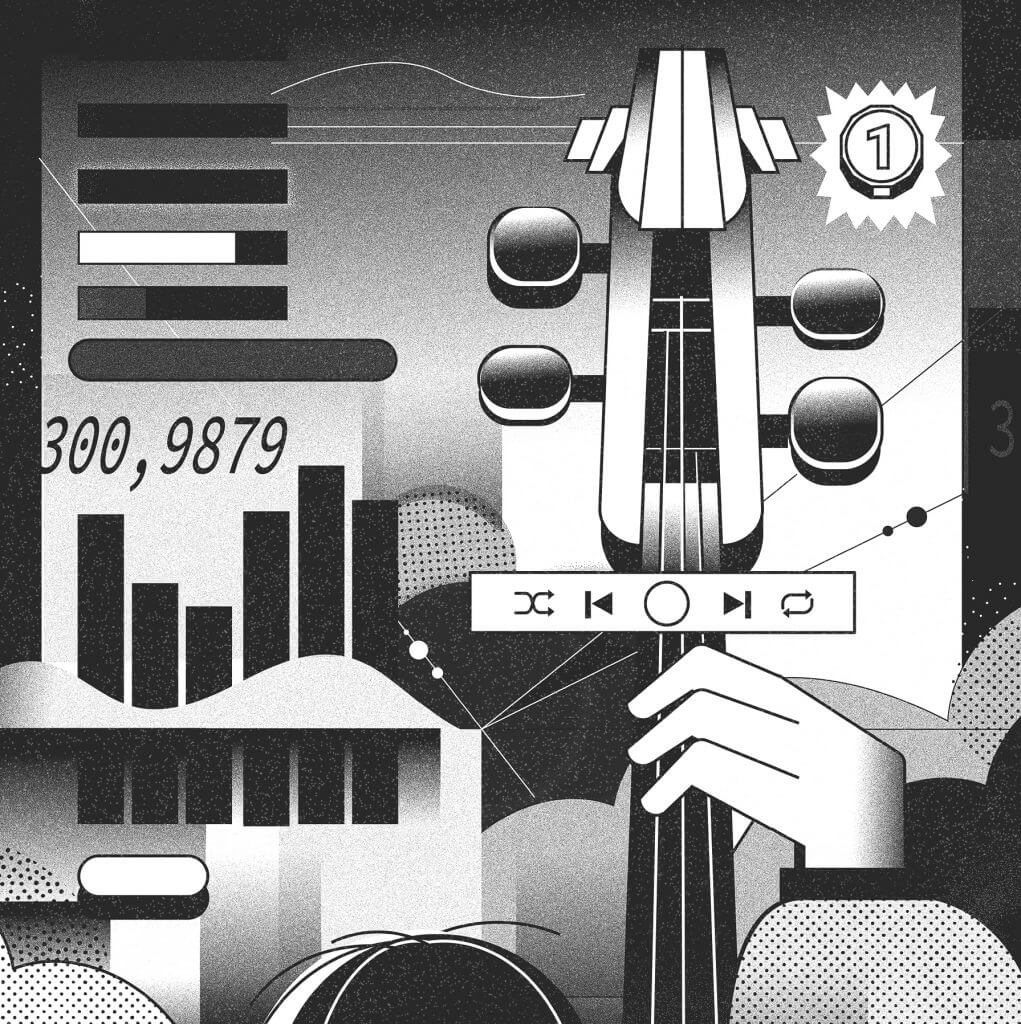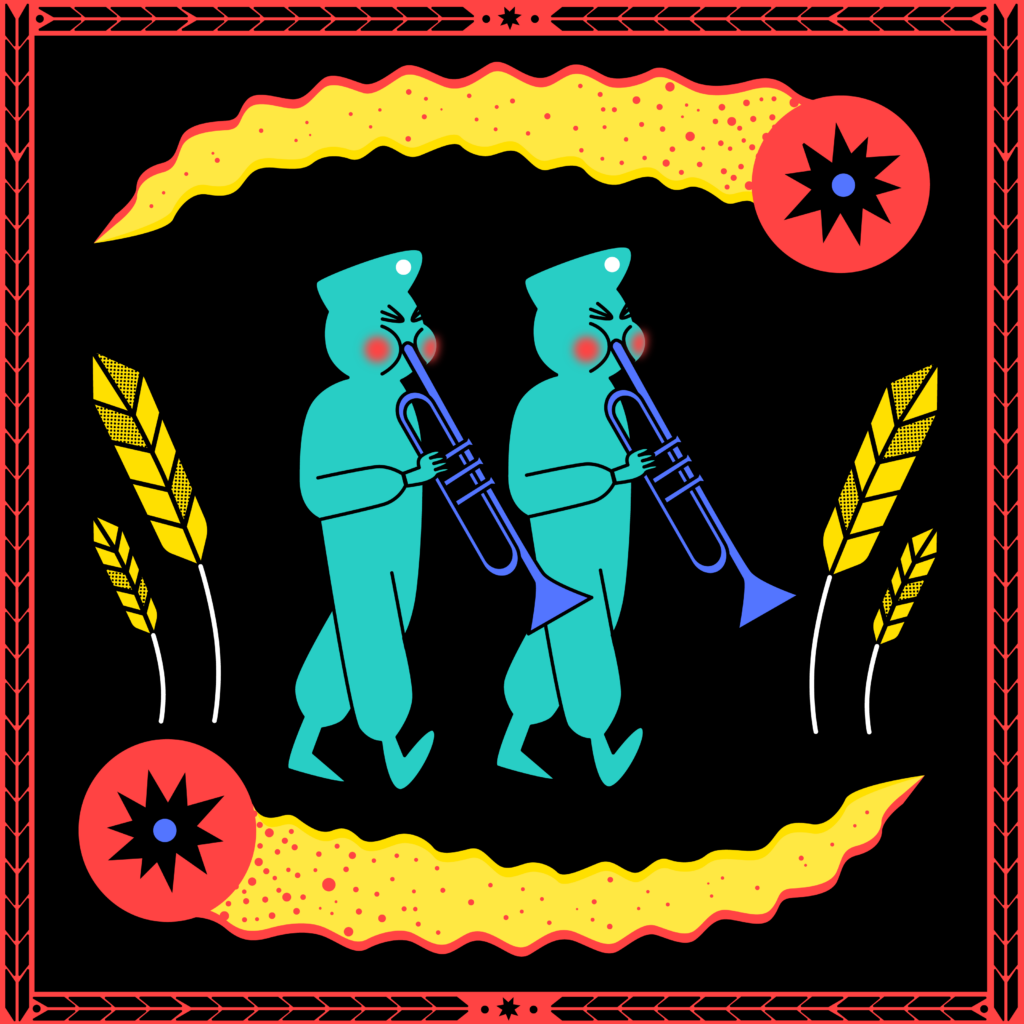
Our first anniversary with COVID-19 is just around the corner, and it seems like it might not be our last. While most industries have had to adapt to this bizarre and new situation, the music biz faced an entirely different challenge. Words like “concerts” and “festivals” sound like sci-fi movie titles right about now, and artists have been left to rely mostly on royalty payments from streaming services such as Spotify and Apple Music. While the notorious nature of how well these platforms pay artists has been widely discussed for years, the pandemic and its devastating consequences have made the need for revenue solutions a lot more urgent.
One promising solution is a platform named Revelator, which intends to use Blockchain technology to change the music industry the same way it changed the economy. With a cloud-based platform that acts as a digital wallet for artists, Revelator aims to make it more efficient by digitizing assets and streaminlining the royalty distribution process using smart contracts and digital wallets. The result is a much faster, more transparent royalty distribution system, and possibly – a future content platform.
We sat with Bruno Guez, the man behind Revelator, to discuss the new music economy.
*
Spotify’s differential payment model created some fascinating yet problematic scenarios. Let’s take two hypothetical artists; one has a thousand one-time listeners, while the other has nothing but one die-hard fan who listens to their song a thousand times. Both groups pay the same fee and receive the same service – unlimited access to music- The first artist is way more profitable to Spotify. A thousand fans pay a thousand monthly fees, while the obsessive fan pays only once.
Artists, on the other hand, receive revenue that’s based on stream-share. So, though it sounds intuitive, this payment model has some challenging loopholes. If you could, how would you re-model the payment model of streaming platforms?
The payment model used today is known as the “pro-rata” model, and yes – as you described in your question, it’s questionable in terms of equity. The concept of a “user-centric” payment model, on the other hand, is an alternative widely discussed in the music industry. The logic behind this model is simple. An artist gets paid when people listen to their music; a user pays only to the artist they streamed. It’s all about dividing each user’s monthly subscription fee between the relevant artists. Imagine every dollar Spotify receives is being poured into one giant money pool, and every month they take money out of that one big pool and pay artists relatively to the overall streams on the entire platform. The user-centric model takes this one pool and turns it into a million individual little pools. Each user pays directly to the artists they streamed.
And that leaves us with the challenge of being discovered.
Regardless of the payment model – as an artist, the act of sharing your music on Spotify alone won’t help you in terms of market growth. You’ll need your music to end up on a playlist with 8 million listening subscribers, and only the Spotify editorial team can do that for you. Since you probably don’t have access to these people, you’ll need your distributor to do that for you, and not every artist has one. Even if you do have one, they’ll prioritize bigger accounts over you.
There’s no democracy on content curation. The harsh truth is that only a few independents make it, while the majority are left unnoticed because there’s just too much music. The amount of content these editors are exposed to is so overwhelming, their taste turns irrelevant. What matters most is data. What are your daily, weekly, monthly numbers? How many followers do you have? When determining whether your song will get in or stay out of that playlist, curators look at these data points first. This model creates an ironic situation – if you want your music to become popular, it must already be popular.
Of course, you can pay Spotify for banners or impressions. But who can afford that perk? That’s right – Universal, Sony, Warner, Domino, XL – Big labels.
And even after you got your song into that playlist, your chances of getting a first-time listener to remember your name and look you up on Spotify are slim. An artist still has to work hard for that audience to come, stay, and come back. When I started to work with artists and record labels 7-8 years ago, even the majors didn’t understand something that has become so obvious today – the importance and potential of growth hacking on social media. Nowadays, the labels know how to invest in these aspects, which are far more relevant for small and medium artists than PR and radio pitching.
Unfortunately, many artists don’t understand that. Even those who understand don’t have the skills to do it themselves or the financial resources to pay a professional to help them. Not everybody can enjoy the benefits of growth marketing. Survival of the fittest, you know. And it’s not about meritocracy, you know – if your song is a masterpiece, you might get some attention. But if you don’t have a team that knows how to work the data, then you’re probably not going to get you where you want to go.
Let’s talk about data for a second, or more precisely – analytics, which presents patterns and trends derived from your data. There are so many different analytics sources today, but most teams aren’t interpreting them right. There’s an artist I’ve worked with; she knew her potential audiences, where they are located, what their preferences are, whatever there is to know. For years, her team targeted audiences on social media and reached out to venues and festivals accordingly. After a few months of performance marketing testing, we analyzed the data. We found out that we got it all wrong. The audiences who responded well to her music were entirely different ones than she expected. We also found out that only a tiny portion of that audience kept following her or bought merch and tickets. Now her career has boosted dramatically, and she didn’t change anything about the songs or visuals. The only thing that changed was the way insights were obtained.
We’re now finalizing our blockchain-based wallet with smart contracts, which we base on the artists streaming data in real-time. Every day, the Revelator platform gets all the streaming data from Apple and Spotify and Deezer and YouTube. We turn that data from “X streams” to “Y dollars.” The data can let you know – you’ve been played 20% more in Israel yesterday or 30% more in Brazil even if you didn’t think you have an audience there, and 16-year-old girls listen to your songs, but in France, it’s 40 year-old men who like your music. All this audience data, playlist data, transaction data, stream data. We have it now, and we’ve put it on top of a BI layer, which we’re working on tirelessly. It’s a business intelligence product, not analytics. Business intelligence.
So, instead of throwing irrelevant numbers on artists and their teams, you’re extracting real insights using Machine Learning that can influence real-time decision making.
That’s the vision. And it’s not all – If I know there’s money that’ll be available in 30, 45, 60 days – let’s make that money available in the wallet for that song. And if that song is part of a contract involving several parties, let’s make sure the money is available for each party immediately. That’s the brilliance of the wallet – we can split payments per asset. Let’s say you’re going to get paid in 60 days, for example – you’ll be able to access that money immediately, thanks to our micro-lending solution. We can give that asset a risk score by analyzing the song’s net worth, stream frequency, and overall data. It determines the loan we’re going to eventually make available in the wallet next day. So we’re turning Revelator into a fintech product. But more importantly, once we have cashflow going into an asset on the wallet, our next objective is to look at insights from the BI layer and automatically extract insights that will tell us where we should be advertising.
You’re implying that it’s possible to optimize different types of audiences, countries, platforms, and demographics – into very dynamic, hyper-changing campaigns – daily. We’ll be able to continually review the campaign’s data, make adjustments, and optimize accordingly. That’s a revolution.
That’s where we’re going. Now imagine that you can take the “theoretical” money from your wallet’s balance and reinvest 15% of it in daily promotion. The money’s there.
A sustainable mechanism that keeps prompting you dynamically from the money that you earn from streaming every day. And since you can track, you can do ROI on the spend. Brilliant. and obviously, I’m excited.
However, the almost endless mass of content uploaded daily to streaming platforms makes it even harder for independent artists to rely on their music alone as an income source. While the lucky few on top take a big chunk of the cake, a growing number of people must split a piece that stays mostly the same size. In recent years, we could see an honest attempt to distribute funds more responsibly, yet it is far from making an actual difference for the long tail. While the live music industry is stuttering in the wake of covid-19, monetization has become a challenge that’s more confusing to crack than ever. What can artists do today to create additional income sources or strengthen existing ones?
First things first, make sure all your rights are registered with the correct parties. If you’re on the performing and recording side, ensure the registration your rights are registered as neighboring rights. Know where you can collect your share. From SoundExchange in the US to PPL in the UK – you must know where your royalties are waiting. Did you register your rights to collect your performance rights? Mechanical, synchronization, digital rights?
The copyright industry grew from 36 billion to 92 billion subscribers this decade. The market is growing, and the audience is growing. The money is there. But if you’re not registered – you’re not going to see any of it. Think about it from a pure business-oriented perspective.
When you get that sorted out – figure out how you grow your audience and figure out whether that means providing content, providing exclusive experiences, or using a live streaming platform. Even nowadays, while social-distancing prevents us from performing in front of a live audience, make an online concert! Sell tickets on Instagram and Facebook even if it’s 50 people giving you $20.
A thousand dollars in your pocket for one show is not bad. A hundred people are better. Erica Badu was making a hundred thousand dollars a day, and she did three shows in a row. So, 300,000 a week, that’s not bad. She figured out how to do the production to make it meaningful. And she asked $1 per ticket, a hundred thousand people showed up. Realize that live streaming platforms can generate income. And now, in Canada and France, the new regulation considers live streaming on Facebook and YouTube as earning royalties. ACUM will pay you $15 a show or whatever the amount is per thousand people. There are royalty rates for online streaming.
And most importantly – keep recording. Use this time wisely. I’m not saying you should make an album. An album is not necessarily your best financial bet. Create one song, see how it works, promote it, get the data, improve it. Stay on people’s minds.
Treat each song release as a campaign, which means you will leverage social media and build your audience list. If you can do more peer-to-peer marketing and even incentivize them, I think that’s the future of marketing. Develop your list. Know who your audiences are and find a way of interacting with them directly. It is much better to have a thousand dedicated fans than a million followers on Spotify or Instagram who barely interact with you and consume your content. Develop that 1000 fan base that you can genuinely trust.
An immediate solution is crucial, but the future is just as important. Streaming platforms have completely changed the music industry, and acknowledging that every revolution in the music industry resulted from a new technology makes me wonder – what’s next?
I believe these centralized platforms – Apple, Amazon, Spotify, YouTube- are fantastic if you know how to leverage them.
Over the years, listeners shifted their music consumption habits, and smartphones are mainly responsible for that shift. Over the last 10-15 years, everyone started streaming online; faster bandwidth, faster internet, and more mobility drove the consumer shift, which forced the music industry to evolve. It wasn’t led by the record labels or the distributors or the majors or anything. They were following and trying to catch up and participate.
Now what’s different is every company is a data company.
Every company will become a data company throughout the coming decade. And we’re trying to go one step further and integrate the data and automate the insights and the advances of money.
That’s the vision and the holy grail of this industry. If we crack the ability to automate, data-driven targeted advertising and targeted underwriting based on the consumption – I mean, any artist will want to get paid faster with embedded financial services and growth marketing within the wallet.
When I think about the next revolution, I think it’s peer-to-peer. I think there’s more decentralization, at least of the audience. It’s easier to interact with your audience directly, to incentivize your audience. Think about the whole idea of community tokens and social money for artists. The artist will have his coin, and the audience will be able to earn that coin and grant access to exclusive content just for being a loyal fan. Fragmenting the marketing strategy and developing a loyal fan base peer to peer is something the wallet can do.
The new share-holders. Your fans instead of executives.
Absolutely. The wallet strategy is part of the journey towards creating a marketplace for rights. Your fans could be the ones giving you royalty financing because they know they’re going to get paid back. You can incentivize them on the revenue stream or the income stream from royalties from concerts. Those can be collateralized and securitized in the wallet on the smart contracts.
This technology gives you the ability to provide your fans with a more significant experience than they get on streaming platforms. Yeah, they used to buy a CD and a t-shirt as a memory at your concerts. But maybe now they can give you a thousand-dollar loan today, knowing it’s a wise investment.
It’s interesting because it’s a common struggle for artists, which is, in most cases, a cold start. Well, sure, money could help you reach out to your first fans. But then you need money to expand that audience, and then you need money to promote every release.
That’s where musicians usually get stuck. I believe 100 or 200 very dedicated fans can eventually become partners and fund your efforts to keep on growing.
And with their funding, you can expand your audience, build a greater community around your brand, and promote more of your releases. With real-time analysis and insights, you’ll be able to automate your marketing efforts and optimize them. Your future revenues will drive your marketing budget directly from the smart contract.
That’s a fascinating loop that solves that “chicken or egg” like paradox artists deal with today.
I agree. The idea of this peer to peer relationship will become more and more important. Today there’s not a lot of accessible infrastructure for artists to take advantage of for growth. And I think that’s going to be the next significant shift.
Apple and Spotify will continue to get in the middle of your relationship with your audience. They will try, and Spotify is already trying, and they will open up access, but it’s not in their interest to give up essential customer data.
*





